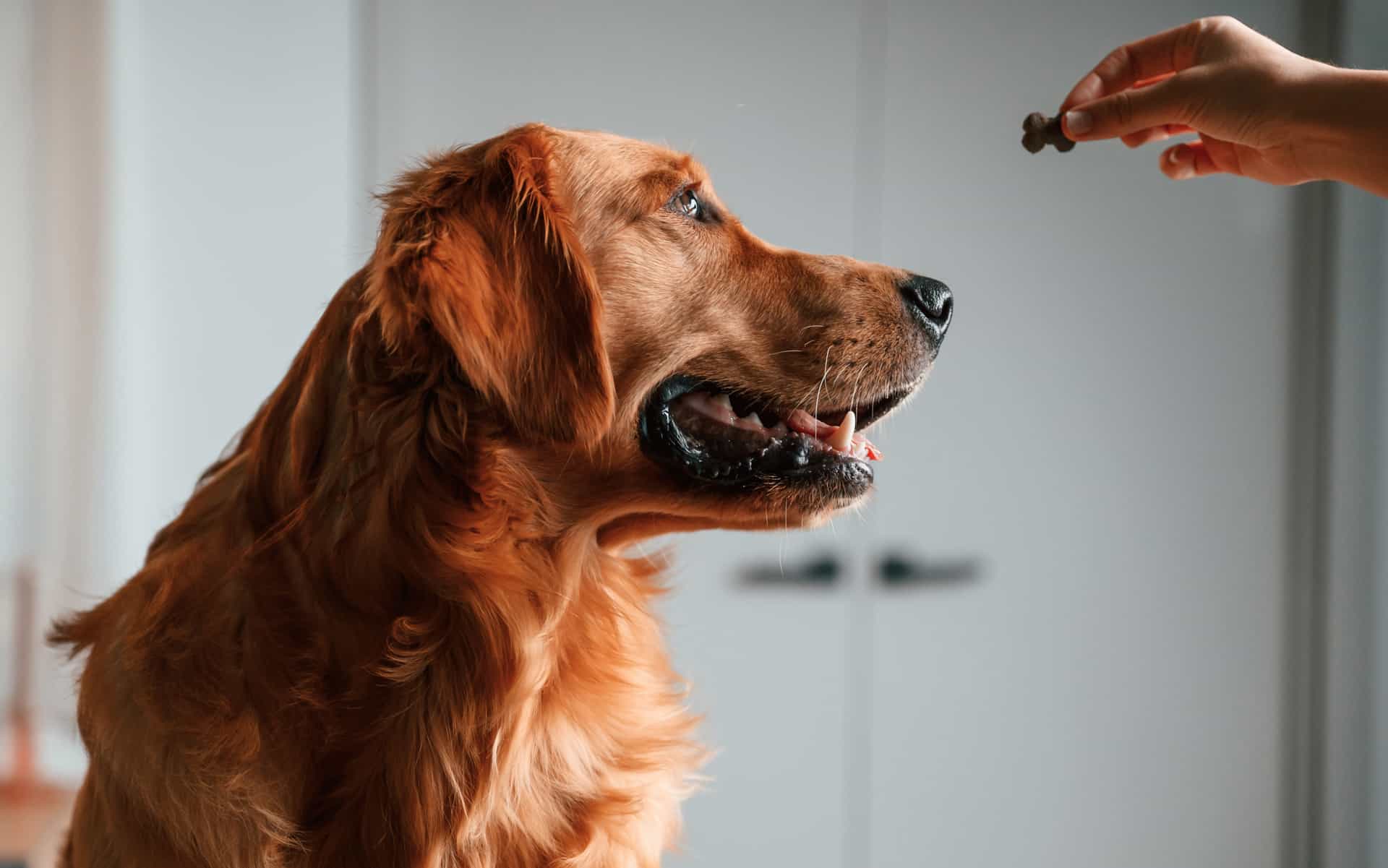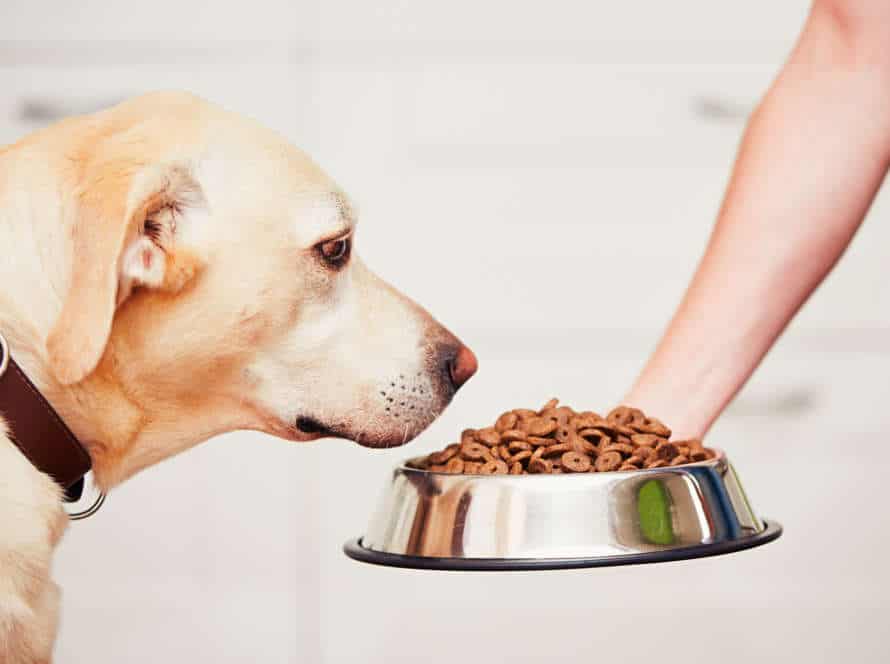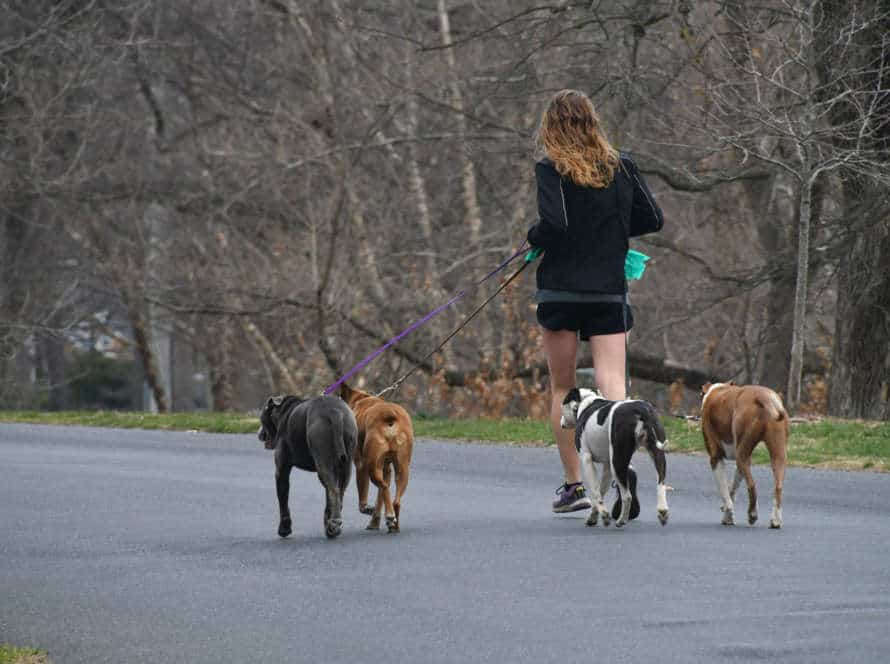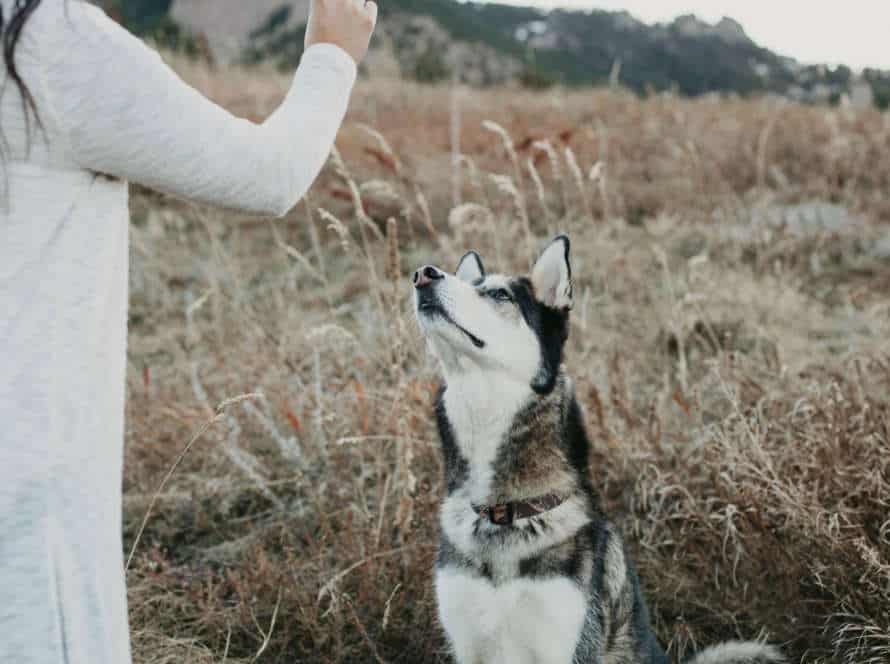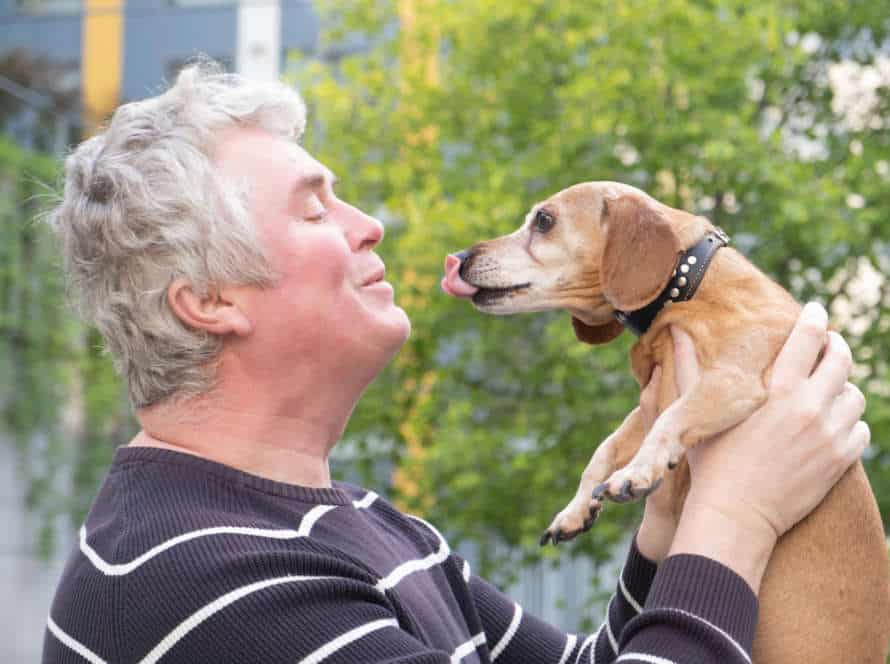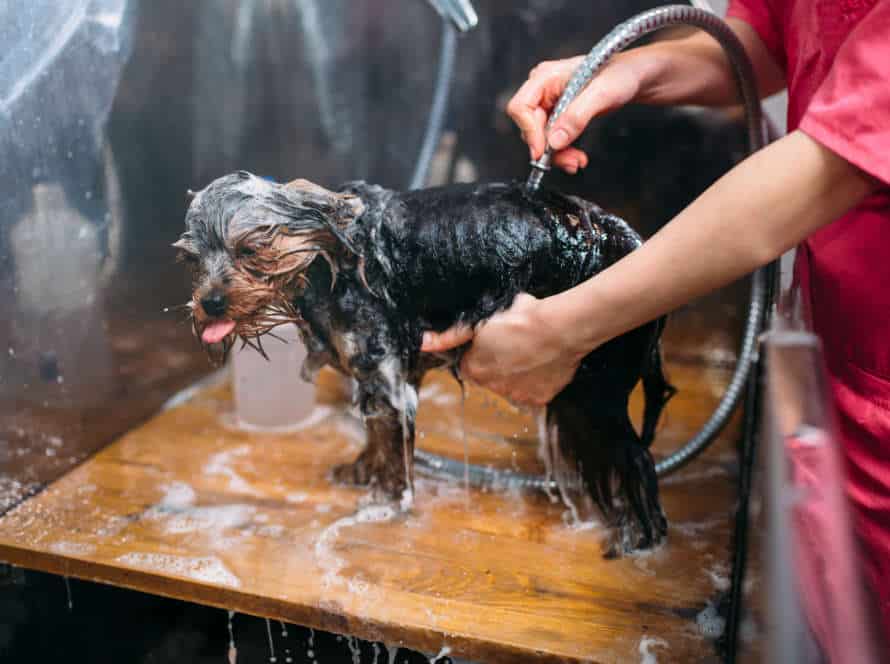Enhancing Your Senior Dog’s Life with Positive Reinforcement
Positive reinforcement is a must to make life better for your senior pup. It’s a type of reward-based training. It focuses on teaching dogs new behaviors, building trust and respect, and helping with any bad behavior.
Here are five ways to use positive reinforcement:
- Give treats, kind words, or petting when your dog does something good.
- Teach new tricks – even older dogs can learn!
- Stimulate them mentally and physically with play, puzzles, and gentle exercises.
- Make vet visits less scary with positive reinforcement.
- Show your love and appreciation with lots of affection.
Using positive reinforcement with your senior dog can make their life happier and healthier. It can also help strengthen your bond.
Understanding Positive Reinforcement Training for Senior Dogs
Positive reinforcement training is a great way to teach your pup something new! Reward desirable behavior with positive reinforcement, like treats or compliments. This kind of training is especially helpful for older pooches. It helps keep their minds and bodies sharp. Let’s explore the power of positive reinforcement for senior dogs!
Positive Reinforcement in Training – Key Concepts
Positive reinforcement training is a great way to make your senior pup’s life better and bring you closer. It also teaches good behavior with gentle methods. Here’s how it works:
- Reward desirable behavior – Give a clicker click or say “Yes!” and give a treat, toy, or praise.
- Be consistent – Stop reinforcing bad behavior and reward good behavior every time.
- Redirect bad behavior – Instead of punishing, redirect them to something they should do and praise them.
- Have patience – Dogs learn through repetition. Give them time to learn more complex behaviors.
By following these steps, you can enrich your senior pup’s life with love, fun, and mutual respect.
The Value of Positive Reinforcement Training for Senior Dogs
Positive reinforcement training is a great way to help your senior pup! It rewards good behavior, rather than punishing bad. Ideas of positive reinforcement are treats, verbal praise, and physical affection. Here are the perks:
- It’s kind, especially for elder dogs with health issues.
- It strengthens the connection between you and your pup.
- It helps prevent or lessen issues such as fear or aggression.
Remember that senior doggies can take more time to learn, so be patient and have breaks when necessary. With dedication and consistency, positive reinforcement can improve your senior dog’s life greatly!
The Difference between Positive Reinforcement and Punishment-Based Training
Positive reinforcement and punishment-based training are two different ways to train your senior pup. Positive reinforcement rewards good behavior and ignores or redirects bad behavior, whereas punishment-based training uses aversive tactics to end bad behavior.
Positive reinforcement uses treats, toys and verbal praise to reinforce desirable behavior. It seeks to motivate and support the behaviors you want your senior dog to perform. Punishment-based training, however, often involves consequences like physical punishment, verbal scolding or exclusion from the owner.
Positive reinforcement has many advantages. It can build trust and positive associations, improve the bond between owner and pup, and make your senior dog’s life even better. However, modifications may be required due to age-related conditions.
Ultimately, positive reinforcement is the more humane and efficient approach, eventually leading to a well-trained and beloved senior dog.
Positive Reinforcement Techniques for Senior Dogs
Positively reinforce your senior pup to enrich their life and make them gleeful. Reward desirable behavior, and ignore or guide away undesirable actions. This kind of training is not only useful, but also strengthens your bond. Here are some positive reinforcement techniques to use with your senior dog:
Clicker Training
Clicker training is a great way to enrich your elderly pup’s life. It uses a clicker plus treats for desired actions. Follow these steps:
- Introduce the clicker and give a treat.
- Pick a behavior, like ‘sit.’
- Click the clicker and give a treat when the behavior is done.
- Repeat and link the clicker with a treat.
- Gradually give fewer treats for doing the behavior correctly.
Clicker training is fun and works well. Pro Tip: Be patient and consistent. Give rewards for good behavior.
Shaping Behaviors
Shaping behavior is a positive reinforcement technique to help senior dogs. It works by rewarding desirable behaviors in steps. Here’s how it works:
- First, identify the behavior you want to shape.
- Next, break it down into smaller, achievable steps.
- Use treats, toys, or praise to reward your senior dog for each step towards the desired behavior.
- Repeat the process and reward each step towards the desired behavior.
- Be patient, never scold or punish your senior dog.
Shaping behavior can enrich your senior dog’s life and strengthen your bond. Pro tip: Be patient, consistent, and always reward good behavior.
Luring
Positive reinforcement techniques can help improve the life of elderly dogs. One effective tool is luring. Here are the key steps:
- Pick a treat your dog loves.
- Hold it close to their nose, and move it in the direction you want them to go, or the behavior you want them to do.
- When they move correctly, give them the treat and praise them.
- Repeat it until they do the behavior without needing the treat.
Luring helps teach elderly dogs new things, boosts their confidence, and strengthens your bond.
Applying Positive Reinforcement Techniques to Common Senior Dog Issues
Train your senior pup with positive reinforcement! This can help them handle common issues that come with old age. Positive reinforcement strengthens the bond between you and your pup. It also makes sure their behavior meets your expectations. And it encourages them to be their best! We’ll share how to use these techniques for common senior dog problems.
Separation Anxiety
Separation anxiety is common in senior dogs. But, it can be helped by using positive reinforcement techniques which improve their wellbeing. Here are some tips:
- Play soft music or white noise when you leave the house.
- Calmly say goodbye and hello to your dog.
- Give them special toys or an interactive feeder to keep them busy.
- Increase the time you’re away from them, reward them with treats and attention when you come back.
- If the anxiety persists, consult a professional, as medication or behavioural therapy may be needed.
Pro tip: Positive reinforcement is a great way to improve your senior dog’s life. Incorporate it into their daily life even when they’re not facing any issues.
Noise Phobias and Fear of Thunderstorms
Noise phobias, like fear of thunderstorms, are common in old dogs. Thankfully, positive reinforcement can help reduce their anxiety and make life more enjoyable. Here are some tips to use it:
- Desensitization: Gradually introduce senior dogs to thunderstorm sounds, raising the volume over time, to help them become less terrified.
- Counter-conditioning: Play their favorite toy or give treats when thunderstorms occur, to link the sound with something enjoyable.
- Distraction: Take their attention away from the noise by engaging in play or cuddles.
With patience and consistency, positive reinforcement can be great at reducing noise phobias in old dogs, enriching their life!
Joint Pain and Mobility Issues
Joint pain and mobility issues are common in senior pooches. Enhancing their life with positive reinforcement can help to reduce these issues. Here are some tips to get you started:
- Low-impact exercise: Swimming or gentle walking can help maintain muscle mass, flexibility and range of motion.
- Joint supplements: Speak to your vet about supplements that can reduce inflammation and minimize pain.
- Positive reinforcement training: Reward your dog for good behaviour with encouraging techniques. This reduces stress and anxiety which can worsen joint pain.
- Accommodations at home: Ramps, raised food and water bowls and a comfy bed are all things you could add to make your pup’s life easier.
By following these, you can help your senior dog enjoy their golden years with ease and comfort. Pro tip: Regular exams with the vet can help detect joint issues early.
Maintaining a Positive and Rewarding Environment for Your Senior Dog
Create a cheerful atmosphere for your older dog! This will make them feel safe and content while they age. Positive reinforcement is an excellent way to motivate them and show them they are valued. This way of training encourages your pup by giving rewards for favourable behaviour and making a positive connection with the activity. Let’s learn more about it!
Importance of Regular Exercise
Exercising regularly is essential for keeping your older pooch’s physical and mental health in check. It enhances mobility, manages weight, strengthens bones/muscles, and reduces the risk of chronic illnesses. Plus, it also gives your pup a positive and gratifying environment that boosts their overall quality of life.
Here are some tips to help you set up a great exercise plan for your furry pal:
- Make it low-intensity and suitable for their age.
- Gradually increase the duration and hardness of the exercise.
- Use treats and appreciation as positive reinforcement.
- Ensure that your pup is comfy and pain-free during and after exercising.
- Consult your vet before beginning any exercise routine for your senior pup.
Pro Tip – Track your dog’s exercise plan using a journal or calendar to monitor how they’re doing and modify as needed.
Creating Positive Association with Vet Visits
Craft a link between vet visits and something positive for your senior pup. Here are some ideas to make the experience more enjoyable for both of you:
- Be upbeat – Your attitude can affect your canine’s feelings. Act with positivity and serenity.
- Bring treats – Offer special snacks during the visit, especially if the doctor does something unpleasant.
- Make the office calming – Play soothing tunes or do calming things, like massage, to help your pet relax.
- Familiarize your pup – Let your pooch explore the vet’s office, without an appointment, to sniff around.
- Reward and praise – Reward good behavior with lots of compliments and treats, like when they stay still during an exam.
Following these steps will make vet visits a positive and rewarding experience for your senior pup, leading to better health and joy.
Encouraging Mental Stimulation and Socialization
As dogs get older, they need mental stimulation and socialization to be happy and healthy. Here are some ideas to help:
- Puzzle toys: Give your dog toys that challenge their problem-solving abilities. Reward them with treats for completing it.
- Short walks and playtime: Walks that are shorter and more often help your senior dog stay physically and mentally active. Let them interact with other dogs too.
- Encourage good behavior: Use positive reinforcement techniques like treats, compliments, and petting to reward them when they do something good.
- Quality time: Spend time with your senior dog doing activities they like, such as cuddling, grooming, or sunbathing. Show them love and that they are valued.
Pro tip: Exercise and stimulation can help prevent age-related cognitive decline and keep your senior dog happy for years.
Special Considerations for Positive Reinforcement Training Senior Dogs
Positive reinforcement training can be a helpful way to improve your senior pup’s life. It’s seen as an effective way to train all dogs, however, when it comes to old dogs, there are certain things to consider. If your canine has been with you for a while, or if you’ve just adopted an older one, understanding the aging process and its impacts on degenerative conditions can help you give them the best training experience.
Understanding Age-Related Health Conditions
As your pup gets older, recognizing and understanding their age-related health conditions is key. Especially for positive reinforcement training. Certain age-related conditions may need special considerations to keep training safe and successful. For instance, if your senior pup has arthritis, you may need to modify their training routine. Plus, older dogs can have sensory and cognitive loss, affecting their response to training and commands. So, adapting your training methods is a must.
Understanding your senior pup’s unique health needs and adjusting your training technique can improve their life and strengthen your bond. Remember: Regular vet check-ups can help identify age-related health conditions. It can also help you make the necessary adjustments to their care and training.
Tailoring Training Techniques to Your Senior Dog’s Abilities
Senior dogs need special training! As a pet parent, you can modify training to fit their abilities. Positive Reinforcement Training (PRT) is a good way to help your senior dog.
Here are some things to keep in mind while training your senior dog with PRT:
- Keep training sessions short and often – older dogs tire easily.
- Use high-value treats that are soft and easy to chew.
- Do low-impact exercises to avoid straining their muscles and joints.
- Use visual and olfactory cues for training, as seniors may have poor hearing or sense of smell.
- Break down complex commands into simpler tasks to avoid overloading them.
By following these tips, you can successfully modify PRT for your senior dog. This will help enhance their life and the bond you share with them!
Pro Tip: Regular vet check-ups are essential to keeping your senior dog healthy – make sure they get proper medical care.
Implementing Positive Reinforcement as a Way of Life for Your Senior Dog
Positive reinforcement can make life better for your senior pup. Keep in mind their physical needs and adjust training techniques accordingly. Here’s how to use positive reinforcement:
- Give treats as rewards, but in moderation.
- Break training into shorter, more frequent sessions.
- Stimulate their mind with puzzles and scent games.
- Use treats, praise, and playtime to reward good behavior.
Through positive reinforcement, your senior pup can stay active and healthy – mentally and physically.
Frequently Asked Questions
Q: What is positive reinforcement?
A: Positive reinforcement is a training method that rewards desired behavior with something that the dog finds pleasurable, like treats or praise.
Q: Can senior dogs still benefit from positive reinforcement training?
A: Absolutely! Senior dogs can continue to learn and benefit from positive reinforcement training throughout their lives.
Q: What are some ways to enhance my senior dog’s life with positive reinforcement?
A: Some ways to enhance your senior dog’s life with positive reinforcement include teaching new tricks, providing mental stimulation through interactive toys, and rewarding good behavior.
Q: Is positive reinforcement the only training method that should be used for senior dogs?
A: Positive reinforcement should be the primary training method for senior dogs, but it can be combined with other training methods as needed.
Q: Can positive reinforcement be used to address behavior issues in senior dogs?
A: Yes, positive reinforcement can be used to address behavior issues in senior dogs. It may require a bit more patience and time, but it can be effective with consistency.
Q: Can I start positive reinforcement training with my senior dog if they have never been trained before?
A: Yes, you can start positive reinforcement training with your senior dog regardless of their previous training or lack thereof. Just be patient and consistent with your training efforts.

